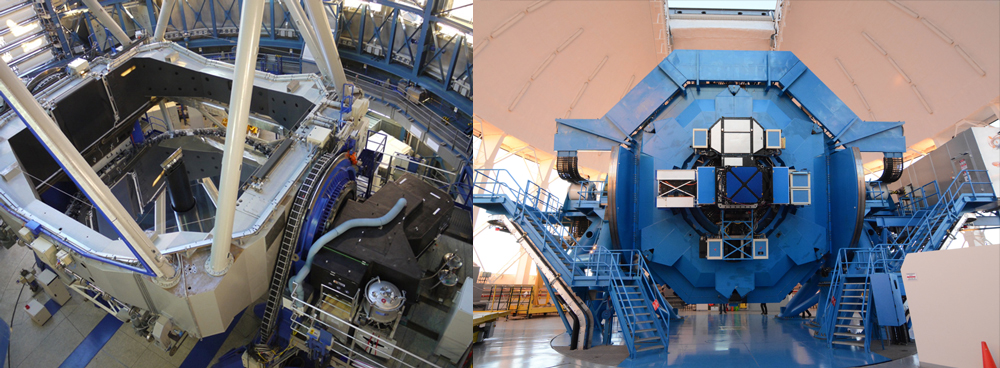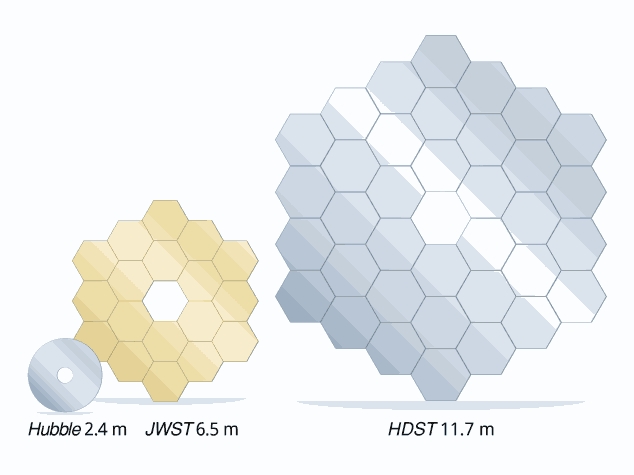We know of a lot of exoplanets. Most, though, we know of only by indirect means – typically via the planet occulting some of the starlight during an eclipse or changing the star’s velocity due to the planet’s own gravity. As of today (June 29, 2016) the exoplanet database lists 2,933 confirmed planets, with another 2,504 probable candidates, totaling to about 5,000 bona fide planet detections. Of these, only seven have been successfully imaged. Why, if we know of so many planets, do we only have images of so few?
The answer is, as you may guess, complicated. Some of the challenges are technical – for example the size of current telescopes and the distortion of the Earth’s atmosphere restrict imaging capabilities to the outer parts of alien solar systems (typically past the orbit of Saturn). Other challenges are more fundamental. The capable targets are necessarily the youngest and most massive, which translate into the brightest since planets cool as they age. These limitations are so extreme, in fact, that imaging other planets is only currently possible for worlds that are less than about 2% the age of the Earth. This leaves very few stars, on the order of a few thousand, that are close enough and of the right age that their planets may be directly imaged.
HR 8799: The first directly imaged extrasolar planetary system. Planets b, c, d, and e together consist of roughly twenty times the mass of our own solar system. (Images from Marois et al. 2010).
In suit, directly imaged exoplanets are quite rare – but the results of the few successes showcase the beautiful complexity of other planetary systems. For instance, the HR 8799 hosts four planets that are each roughly five to ten times as massive as Jupiter – accounting for more than twenty times the mass of our own solar system, all outside of the distance of Saturn’s orbit (Marois et al. 2008, 2010). Monstrous planetary systems such as this exemplify the existence of solar systems that would have been considered science fiction prior to their discovery.
Extreme Adaptive Optics Systems SPHERE (left) and GPI (right). Two of the current planet hunting instruments installed on 8-meter class telescopes. EOS scientists are conducting a search for giant planets using SPHERE, pictured left. Image credits: ESO (left) and Marshall Perrin (right).
Currently there are several ground-based instruments with unprecedented sensitivity that are beginning to discover gas-giant planets in the outer regions of nearby solar systems. EOS scientists Kevin Wagner and project lead Daniel Apai are conducting a search for planets using SPHERE – the most complex and expensive of the latest generation of planet finding instruments (stay tuned for results!). Soon, bigger ground-based telescopes will push capabilities to smaller masses (e.g. Saturn-like worlds) in orbits more like those of the planets in our own solar system. But still, the potential to image an Earth-like plant remains for the distant future.
Succession of NASA flagship space telescope primary mirrors. The proposed HDST (“High Definition Space Telescope”), if selected for mission development, will explore alien Earths for atmospheric biosignatures, and will allow the first scientific survey for life outside of Earth. Image credit: C. Godfrey (STScI).
Perhaps the best possibility for detecting truly Earth-like planets is direct imaging with a large (12-16 meter) space telescope – the successor to Hubble and JWST. Direct imaging has the added advantage of being sensitive to a planet’s intrinsic emission/reflection spectrum, which is imprinted upon by the planet’s atmospheric absorption profile, allowing for chemical studies of exoplanetary atmospheres. One of the main science drivers behind such a mission is not only the detection of Earth-like planets, but also the investigation of their atmospheres for chemical signs of life (e.g. oxygen is primary of biological origin on Earth). This opens an exciting possibility – the bridging between two classical facets of science, astronomy and biology, into the modern science of Astrobiology. There are several concepts of an Earth-like exoplanet-imaging telescope, at various stages of conceptual review, and proposals are being put forth in the coming years to begin construction. Probably by the year 2040, if all goes according to plan, we will be able to start a true scientific search for alien life.



